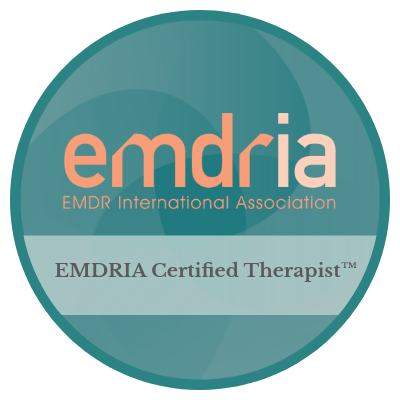EMDR THERAPY & FLASH TECHNIQUE
Debbie Molik, LCSW
EMDRIA Certified Therapist
Supporting healing through integrative, evidence-based approaches.
Do you have difficulty managing stress, experience nightmares, struggle with sleep, feel anxious, depressed, fearful, or constantly on high alert? Living your life through the lens of what happened to you can be exhausting. It’s like wearing tinted glasses that distort your view — you may react to danger, even when it’s not there.
Trauma can stem from any experience that overwhelms your nervous system — leaving parts of those memories “stuck” as if frozen in time. It could be something recent, long ago, or even ongoing or repetitive.
EMDR and Flash Technique jumpstart your brain’s natural healing process by “unsticking” what’s frozen so the memories can be fully integrated. As pieces connect, emotions fade, you gain new perspectives, and experience relief. It’s like clearing those lenses so you can experience life with clarity, courage, and hope.
What is Trauma and how do EMDR and Flash Technique Help?
EMDR Therapy and Flash Technique are effective for most motivated adults, teens and children (ages 10+) who have experienced trauma — such as unwanted sexual experiences, abuse, neglect, abandonment, betrayal, military trauma, assault, accidents, or natural disasters.
Working to target specific issues, you’ll strengthen your capacity to cope, develop new skills and — most importantly — address the root cause of your distress. This process can help you achieve a better quality of life and build lasting resilience.
Who Can Benefit?
Ready to learn more? Schedule a free 15-minute consultation to see if we’re a good fit.
EMDR & Flash Technique: Pathways to Healing
Eye Movement Desensitization and Reprocessing (EMDR) was created in 1987 by Francine Shapiro, who took a walk in the park and noticed that as her eyes moved back and forth, distressing memories felt less intense. Her curiosity led to the development of an eight-phase protocol that helps people process painful memories.
EMDR is unique in that it does not require detailed discussion or repeated reliving of trauma. Instead, it involves relatively brief exposure to “stuck” aspects of distressing memories while you notice your internal experience. Using bilateral stimulation — eye movements or alternating tapping — EMDR utilizes the brain's natural Adaptive Information Processing system to make sense of and integrate experiences, leading to calmer emotions, new insights, and greater resilience.
EMDR is one of the most extensively researched and widely used trauma therapies. Its highly recommended by the World Health Organization and the U.S. Department of Veterans Affairs.
EMDR: A Walk in the Park
Flash Technique was developed by Dr. Philip Manfield, an EMDR therapist, consultant, researcher, and trainer, who recognized that some clients, even with careful preparation, were unable to tolerate processing highly charged memories.
Like EMDR, Flash Technique uses the Adaptive Information Processing system and bilateral stimulation — eye movements or alternating tapping — to process distressing memories.
The key difference is that during reprocessing, your focus is on a positive or neutral topic, distracting your conscious mind from the subconscious process. Because exposure is so limited, reprocessing occurs with little emotional distress — offering a calm, efficient, and effective path toward healing.
Flash Technique: Gentle Healing
Drawing from EMDR and Flash Technique, two evidence-based treatments, I meet each client where they are in their healing journey. These methods honor each client’s pace while engaging the brain’s natural healing process. I also integrate HeartMath, CBT, ego state therapies, and somatosensory approaches to support regulation and self-awareness — creating a healing experience that feels safe and sustainable.
An Integrative Approach
Interested in next steps? I offer a free 15-minute consultation to see if we’re a good fit.

